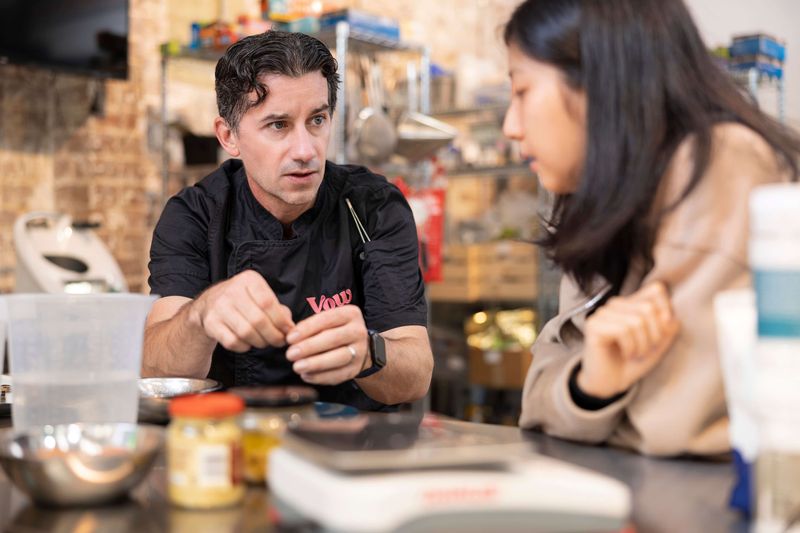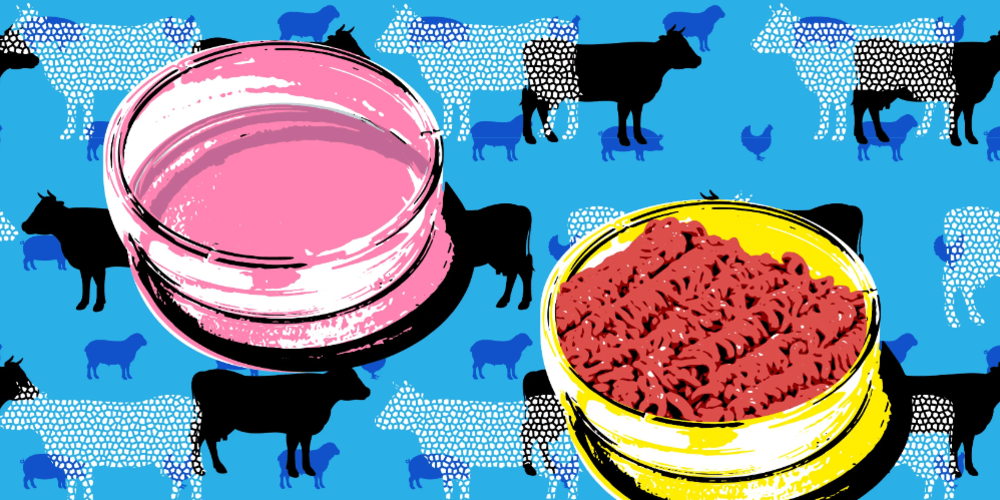Embracing a New Era in the Meat Industry
Imagine a world where meat is cultivated in labs, reducing environmental impact, redefining dietary choices, and revolutionising the very essence of production processes. The meat industry's future stands on the brink of transformation, poised to address animal welfare, sustainability, and health concerns. As cultivated meat and plant-based alternatives take centre stage, their impact resonates across the entire supply chain, captivating professionals in the food manufacturing sector.
Embracing Change: Challenges and Innovations
The staggering truth? Greenhouse gas emissions from animal farming contribute significantly to global emissions. Livestock, especially cattle, intensify this issue, requiring extensive land and energy for their upkeep, spewing carbon dioxide and methane into the atmosphere. Shockingly, the World Economic Forum suggests that half of our habitable land is already devoted to agriculture, hinting at impending scarcity.
However, there's a beacon of hope - cultivated meat. This once-fictional concept has materialised into a tangible solution. By nurturing animal cells in bioreactors, we've birthed a product mirroring traditional meat, promising reduced environmental impact, improved animal welfare, and lower risks of foodborne illnesses. If consumers take to these products, the market for cultivated meat could reach $25 billion by 2030.
Sydney startup company Vow Food are pioneering cell-based meats, aiming for supermarket shelves. Founded in 2019, Vow Food has been producing lab-grown meat from pork and kangaroo cells and has since expanded the menu to include rabbit, mice, goat, water buffalo and alpaca. Vow has also become Australia’s first cell-based meat player to begin the regulatory approval process with FSANX.

"Cultivated meat presents an unprecedented opportunity to revolutionise not just the food industry but our global approach to sustainability." - Dr. Jane Smith, Cellular Agriculture Expert.
Rethinking the Future: Benefits and Challenges
The allure of lab-grown meat lies in its potential to significantly cut greenhouse gas emissions, land use, and water consumption compared to conventional meat. Some life cycle assessments suggest that compared to conventionally produced beef, sheep, pork, and poultry, cultivated meat involves 78-96% less greenhouse gas emissions, 99% less land use, and 83-96% less water use.
However, understanding the nuances of its environmental impact is crucial, with a study conducted by LEAP (Livestock, environment, and People) finding that replacing conventional cattle farming with “labriculture” can be misleading as not all greenhouse gases generate the same amount of warming or have the same lifespan. Methane per tonne emitted has larger warming impacts than carbon dioxide; however, it only remains in the atmosphere for 12 years, whereas carbon dioxide persists and accumulates for millennia.
Beef production is a significant source of greenhouse gases; therefore, reducing consumption and improving production methods to reduce emissions is imperative. However, both cultured meat and cattle farming have complex inputs and impacts that need to be considered; for example, creating more grazing land for cattle often results in deforestation, which increases the CO2 footprint of cattle systems, whilst producing food in urban laboratories could free up land for storing CO2.
Therefore, the environmental benefits of lab-grown meat are a powerful imperative to continue and expand labriculture research, specifically in considering and developing renewable energy resources for production, which would include a large-scale transition to a decarbonised energy system. Ultimately, the climatic impact of cultured meat production depends on decarbonised energy generation and sophisticated meat companies' production systems.
Think of it as a puzzle; every piece of the cultivated meat process needs careful consideration to complete the bigger, sustainable picture.
A Likely Path Forward and its impact on the industry
There are two hypothesised avenues when discussing the future of the meat sector.
1. Substitution Effect: Implies the rising consumption of cultured meat would equate to declining consumption of conventional meat. Particularly so for environmental narratives. Under the full substitution effect, all traditional meat production would be replaced by cultured meat, leading to dramatic falls in animal-related emissions and instigating change in the workforce.
2. Addition effect: cultured meat production would not reduce conventional meat production but instead increase global meat consumption. Under this effect, traditional meat production wouldn’t decrease, and neither would its environmental impacts.
The future likely holds a blend of traditional and cultivated meats on our plates. This diversification would create new opportunities and challenges for professionals within the meat industry. Established companies well positioned to reconfigure their existing functions for this opportunity include,
Fermentation companies: Opportunity to develop tailored growth media.
Industrial Enzyme Industry: Production of signalling compounds (insulin and growth factors) at a food grade.
Farmers with breeding lines that have superior taste characteristics could provide cell lines for replication.
Future of the workforce
As the industry pivots towards innovation, it beckons a workforce versed in traditional agricultural roles and chemistry, biotechnology, and food engineering. Job landscapes will diversify, creating opportunities in rural areas for cultivating specific plants while demanding more sophisticated skills for lab-centric production. Having connected with professionals across diverse roles and witnessed their adaptability and quest for knowledge, it's evident that versatility is the key to thriving in this evolving terrain.
Charting the Course: Education and Support
Transitioning the workforce into this new paradigm requires concerted efforts - government initiatives, educational programs, and bridging the gap between research and commercialisation. Universities can become epicentres for cultivating talent, empowering communities, and fostering technological advancements in food production, whilst nonprofits can educate current meat production workers about how to mitigate occupational risks best.
This shift towards transitioning the workforce and upskilling future talent pools can be seen in the creation of Australia’s first online course in cellular agriculture. The system created by Cellular Agriculture Australia (CAA) is designed for students and professionals to equip them with the foundational knowledge to understand this emerging industry and its future potential.
Navigating the Uncharted Waters
It is reasonable to argue that producing small-scale cultured meat products of edible quality should be achieved shortly. However, the timeline for delivering this at a price competitive point, like existing processes of meat products, is less determined. Large-scale developments are significantly more challenging; the critical issue is producing effective and appropriately priced cultured media. The most ambitious production target, producing cultured meat on a scale that could make marked impacts on global climate change – is likely to take decades, if it is at all possible.
If cultured meat technology reaches a scale proposed by some that enables it to deliver meaningful climate change mitigation, this could be part of a significant and global shift in livelihoods, prices and supply chains across multiple sectors beyond agriculture.
The success of the cultured meat sector would depend on complex social apparatus and government policies, including regulation, tax and subsidy regimes.
The meat industry is at an inflection point. As cultivated meats develop, they offer promising solutions to some of the most pressing issues facing our world today. However, their path to commercialisation is fraught with challenges. Regardless, one thing is clear: change is coming, and those who can adapt will be best positioned to thrive in this new landscape.
Join the conversation with Leo Curtin to explore the forefront of these transformative innovations in the meat industry. Whether seeking insights into the evolving landscape or needing recruitment support for your ventures, Leo Curtin guides you. Reach out today to shape the future of food manufacturing and discover how Leo Curtin can empower your journey towards innovation and success.
Contact Leo Today: LeoC@austcorpexecutive.com.au

